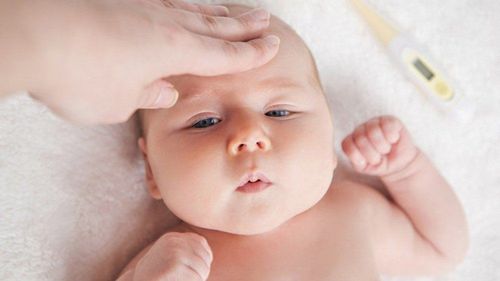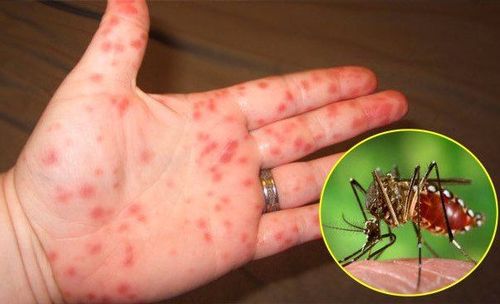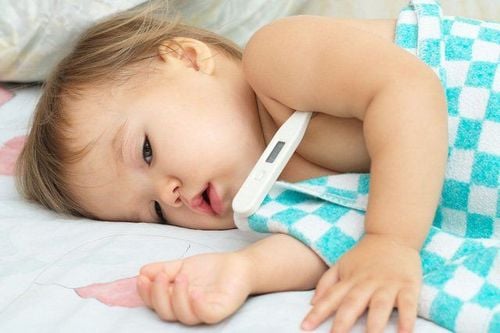This is an automatically translated article.
The article is professionally consulted by Master, Doctor Phan Thi Cam Van - Neonatologist - Pediatrics - Neonatal Department - Vinmec Danang International General Hospital. He has 07 years of experience as a Resident Doctor and Pediatrician - Neonatologist specializing in the treatment of Pediatric diseases of Respiratory, Digestive, Infectious Diseases, Nurturing, and Common Problems Infant.Fever is the body's normal defense response to the invasion of pathogens and viruses from outside. But if the fever is 38.9 degrees Celsius or higher, the nervous system is easily irritated and seizures appear in children. This article will provide more information on what to do when your child has a febrile convulsion.
1. Things to know about fever in children
Fever is the body's response when unfortunately infected with viruses, bacteria, parasitic infections, autoimmune diseases or malignant diseases... If the fever does not cause discomfort, the child will have a natural fever. and most infections the fever goes away quickly.
When the child's body temperature is above 37.5 degrees Celsius, it is defined as a fever. A temperature between 37.5 degrees Celsius and 38 degrees Celsius is considered a mild fever, between 38 degrees Celsius and 39 degrees Celsius is a moderate fever, between 39 degrees Celsius and 40 degrees Celsius is a high fever, and over 40 degrees Celsius is a very high fever .
Parents should not give children fever-reducing medicine when the temperature is still below 38.5 degrees. When the child has a mild fever at 37.5-38.5 degrees Celsius, just take off some clothes, let the baby drink more water or breastfeed more.
High fever convulsion is a common situation in children from 6 months to 6 years old because the child's brain has not yet fully developed, so it has sensitive reactions to disturbances of body temperature. Febrile seizures in children are usually benign, do not cause any damage to the child's brain and usually disappear after a few tens of seconds. Seizures caused by febrile seizures usually do not cause brain damage.
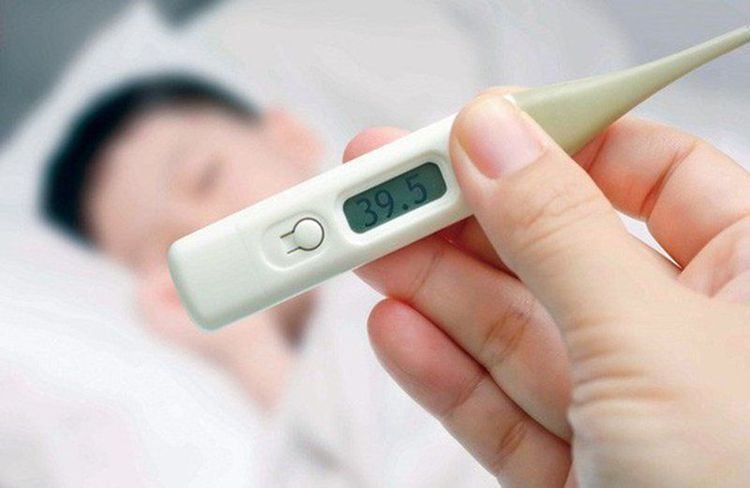
Trẻ được xác định là sốt khi nhiệt độ cơ thể trên 37,5 độ C
2. Signs of a child having a convulsion due to high fever
Child's limbs stiffen, then convulses, eyes roll back; Pauses of breathing for several seconds, vomiting, urinary and bowel incontinence; Children are often very sleepy after a seizure; The child may have confusion and lethargy after the seizure, but will return to normal within 1 hour.
3. How to handle febrile convulsions in children
Many parents are confused and do not know how to handle high fever in children, so in many situations, they accidentally hurt children. Here are some guidelines parents should refer to:
Step 1: Open the airway for the child
When seeing a child having a convulsion due to high fever, parents need to be very calm, put the child on his side, do not bend his head to The child can breathe well. However, parents need to be careful not to hold the child tightly, not to put anything including liquid into the child's mouth, calculate the time of the child's seizure and remember the child's seizure symptoms.
Step 2: Use antipyretic by inserting into the child's anus
Use Paracetamol at a dose of 10mg/kg/time to reduce fever for children. For children 6 months to 1 year old, the dose is 1 tablet of 80mg; Children from 1-5 years old use 1 tablet 150mg content.
Step 3: Cool the child's body to reduce fever
Use a towel dipped in warm water to place in the armpit, groin and behind the child's ears. Change a new warm towel every 2-3 minutes and stop when the baby's armpit temperature is below 30 degrees Celsius. Take the child immediately to a medical facility for proper diagnosis and treatment.
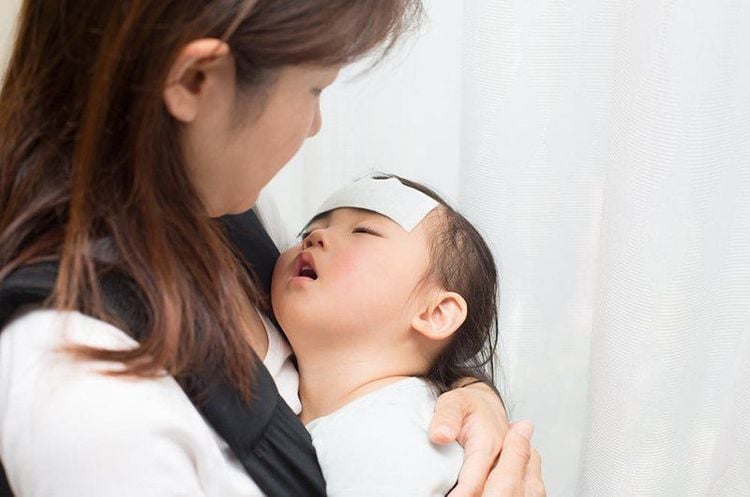
Làm mát cơ thể trẻ để hạ sốt trước khi đưa đến bệnh viện kiểm tra
4. How to prevent convulsions when your child has a fever
Febrile convulsions in children are easy to recur. However, if you know how to handle it right away when a child has a fever, it will prevent convulsions occurring in children. Here are some ways to prevent convulsions when your child has a fever.
Take the child to the doctor as soon as the child has a fever to know the cause and how to prevent convulsions; Children need to drink plenty of water or rehydration electrolytes when fever; Let the child wear light, airy, not warm clothes; Regularly monitor the child's body temperature with a thermometer; Wipe the child's body with warm water to reduce fever when the child's temperature is above 39 degrees Celsius; When a child has a convulsion due to high fever, parents must be very calm to take care of the child properly and after the seizure stops, take the child to a medical center for early examination and treatment. Fever can be a sign of dangerous diseases. Therefore, when your baby has a high fever for a long time, you should take your baby to a medical center to be examined and diagnosed early by doctors.
For children to be healthy and develop well, it is necessary to have a nutritious diet in terms of quantity and quality balance. If children are not provided with adequate and balanced nutrients, it will lead to diseases of excess or lack of nutrients, which adversely affect the comprehensive development of children in terms of physical, mental and motor skills.
Children who do not eat properly are at risk of micro-mineral deficiency causing anorexia, growth retardation, malabsorption,... If they notice the above signs, parents should supplement their children with products. The supplement contains lysine, essential micro-minerals and vitamins such as zinc, chromium, selenium, and B vitamins to help fully meet the nutritional needs of children. At the same time, these essential vitamins also support digestion, enhance nutrient absorption, help improve anorexia, and help children eat well.
Parents can learn more:
Signs of zinc deficiency in children
Micronutrient deficiency and failure to gain weight in children
Please regularly visit Vinmec.com website and update useful information to take care of your child. Take care of the baby and the whole family.




